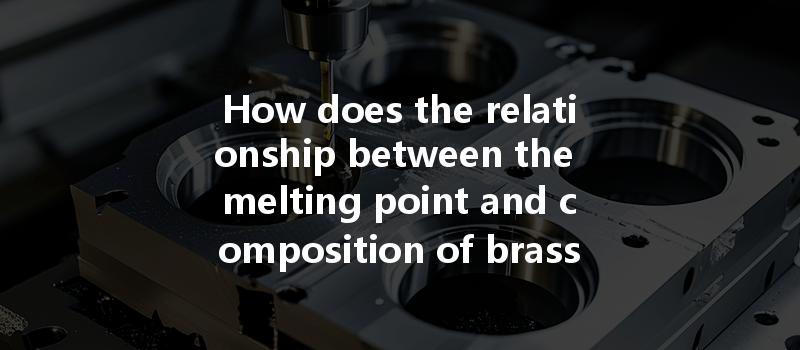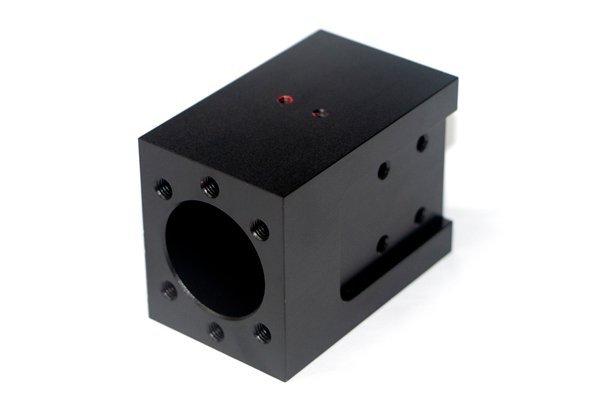Opening:
Did you know that a tiny variation in the melting point of brass can have significant implications for CNC machining processes? Brass, an alloy primarily composed of copper and zinc, has melting points that vary based on its specific composition. This seemingly minor detail can lead to either precision or chaos on the production line. With the world increasingly moving towards automated manufacturing, understanding the relationship between melting point, composition, and machining accuracy is paramount for businesses aiming to stay competitive.
Understanding Brass and Its Composition:
Brass is a popular alloy used widely in various industries due to its exceptional machinability, corrosion resistance, and aesthetic appeal. The properties of brass can change significantly depending on the percentage of copper and zinc. For instance, the presence of other metals such as lead can enhance machinability but may also affect melting points. The most common types of brass are:
When selecting brass for CNC machining, manufacturers must consider these compositional differences, as they can dramatically affect the performance, quality, and properties of the final product.
Melting Point and Its Effect on CNC Machining:
The melting point of brass is critical when it comes to CNC machining, particularly in processes such as cutting, turning, and milling. Here are several ways in which the melting point affects machining accuracy:
As brass is heated during machining, it expands. If the machining temperature approaches the melting point, the material can begin to lose structural integrity, leading to dimensional inaccuracies. For example, machining at elevated temperatures can cause warping and distortions that may not be immediately visible but can impact the final tolerances.
Higher temperatures from machining can lead to increased wear of cutting tools. Brass with a lower melting point may require more frequent tool changes or recalibrations if the machining temperature exceeds safe limits. This can elevate production costs and diminish efficiency.
The melting point also plays a significant role in chip formation. At temperatures approaching melting, brass may start to adhere to the cutting tool, resulting in undesirable burrs or uneven finishes. This makes it vital for machinists to know the brass type they are working with, allowing them to adjust their parameters accordingly.
In CNC machining, feed rates and spindle speeds need to be optimized based on the material being machined. If brass is too close to its melting point, operators must slow their machining processes to avoid material deformation. Understanding the link between composition and melting point allows CNC operators to fine-tune their machines for maximum accuracy.

Another critical factor influenced by melting point is the final surface finish of the component. Variations can lead to rough surfaces that require additional treatment or finishing processes to meet engineering specifications. Selecting the appropriate brass type for specific tolerances and finishes, considering melting points, can mitigate post-processing requirements.
Achieving Optimal Machining Accuracy: Practical Solutions:
To enhance CNC machining accuracy for brass parts, manufacturers can implement several strategies:
Always choose brass alloys that are known for their stability and machining performance. For highly precise applications, low-melting-point brass like some leaded brasses should be avoided unless otherwise specified. Utilize material data sheets to select the best-fit alloy, considering its thermal behavior and machinability ratings.
Invest in advanced cooling techniques such as coolant systems to manage temperatures during machining. Chilling sprays and high-pressure coolant can keep the material temperatures well below melting points, preserving structural integrity and ensuring precision.
Using tools made from high-speed steel or carbide can combat excessive wear from machining brass. Tool coatings such as TiAlN (titanium aluminum nitride) can also help withstand the thermal and wear stresses encountered during machining.
Regularly review and adjust CNC machining parameters based on the specific brass alloy being used. Ensure the appropriate RPMs, feed rates, and depth of cuts align with the alloy’s melting point characteristics.
Employ advanced sensors and monitoring systems to track the temperature and performance of both the workpiece and tooling during production runs. Real-time data can help make fast adjustments that improve accuracy and reduce scrap rates.
Implement quality control measures to assess parts post-machining, ensuring dimensional accuracy. Techniques like dimensional inspection and surface roughness evaluations can provide insights into the effectiveness of the machining processes and necessary adjustments.
:
In summary, the relationship between the melting point and the composition of brass is a game-changer in ensuring CNC machining accuracy. By understanding how these factors influence thermal expansion, tool wear, chip formation, feed rates, and surface finishes, manufacturers can adopt best practices that lead to increased efficiency and precision.
Understanding the nuances of brass alloys and their impact on machining processes is essential for maintaining competitiveness in today’s fast-paced manufacturing industry. Embracing this knowledge can drive better production quality, lower costs, and improved customer satisfaction—elements that are critical in the quest for excellence in manufacturing.
As the industry continues to innovate, the importance of such knowledge will only grow. Reflecting on the content discussed, it is clear that implementing the appropriate measures to account for both the melting point and composition of brass in CNC machining is not just an operational need but a strategic advantage. For businesses seeking to enhance their manufacturing capabilities, refining these processes offers a pathway towards a more efficient and precise future.






